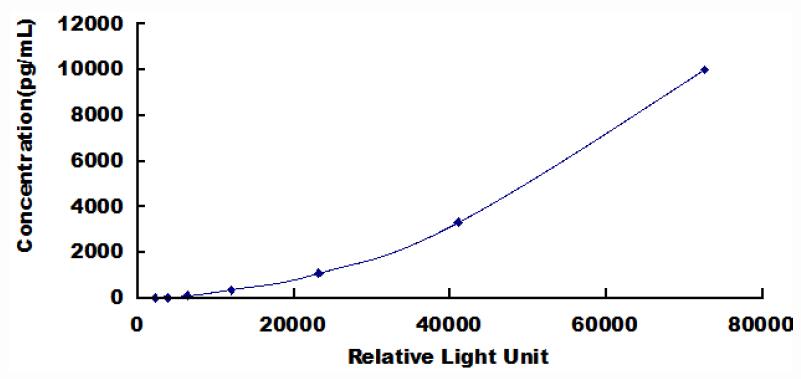Packages (Simulation)

Reagent Preparation

Image (I)
Image (II)
Certificate


CLIA Kit for P-Selectin (SELP)
CD62P; Selectin, Platelet; PSEL; GMP140; LECAM3; GRMP; GMRP; PADGEM; Leukocyte-endothelial cell adhesion molecule 3; Platelet activation dependent granule-external membrane
- Product No.SCA569Mu
- Organism SpeciesMus musculus (Mouse) Same name, Different species.
- Sample TypeSerum, plasma, tissue homogenates, cell lysates, cell culture supernates and other biological fluids
- Test MethodDouble-antibody Sandwich
- Assay Length2h, 40min
- Detection Range13.7-10,000pg/mL
- SensitivityThe minimum detectable dose of this kit is typically less than 5.1pg/mL.
- DownloadInstruction Manual
- UOM 48T96T 96T*5 96T*10 96T*100
- FOB
US$ 605
US$ 864
US$ 3888
US$ 7344
US$ 60480
For more details, please contact local distributors!
Specificity
This assay has high sensitivity and excellent specificity for detection of P-Selectin (SELP).
No significant cross-reactivity or interference between P-Selectin (SELP) and analogues was observed.
Recovery
Matrices listed below were spiked with certain level of recombinant P-Selectin (SELP) and the recovery rates were calculated by comparing the measured value to the expected amount of P-Selectin (SELP) in samples.
| Matrix | Recovery range (%) | Average(%) |
| serum(n=5) | 80-92 | 85 |
| EDTA plasma(n=5) | 93-104 | 101 |
| heparin plasma(n=5) | 98-105 | 102 |
Precision
Intra-assay Precision (Precision within an assay): 3 samples with low, middle and high level P-Selectin (SELP) were tested 20 times on one plate, respectively.
Inter-assay Precision (Precision between assays): 3 samples with low, middle and high level P-Selectin (SELP) were tested on 3 different plates, 8 replicates in each plate.
CV(%) = SD/meanX100
Intra-Assay: CV<10%
Inter-Assay: CV<12%
Linearity
The linearity of the kit was assayed by testing samples spiked with appropriate concentration of P-Selectin (SELP) and their serial dilutions. The results were demonstrated by the percentage of calculated concentration to the expected.
| Sample | 1:2 | 1:4 | 1:8 | 1:16 |
| serum(n=5) | 80-102% | 83-94% | 80-98% | 80-97% |
| EDTA plasma(n=5) | 81-98% | 79-90% | 91-99% | 98-105% |
| heparin plasma(n=5) | 95-103% | 80-95% | 92-99% | 91-102% |
Stability
The stability of kit is determined by the loss rate of activity. The loss rate of this kit is less than 5% within the expiration date under appropriate storage condition.
To minimize extra influence on the performance, operation procedures and lab conditions, especially room temperature, air humidity, incubator temperature should be strictly controlled. It is also strongly suggested that the whole assay is performed by the same operator from the beginning to the end.
Reagents and materials provided
| Reagents | Quantity | Reagents | Quantity |
| Pre-coated, ready to use 96-well strip plate | 1 | Plate sealer for 96 wells | 4 |
| Standard | 2 | Standard Diluent | 1×20mL |
| Detection Reagent A | 1×120µL | Assay Diluent A | 1×12mL |
| Detection Reagent B | 1×120µL | Assay Diluent B | 1×12mL |
| Substrate A | 1×10mL | Substrate B | 1×2mL |
| Wash Buffer (30 × concentrate) | 1×20mL | Instruction manual | 1 |
Assay procedure summary
1. Prepare all reagents, samples and standards;
2. Add 100µL standard or sample to each well. Incubate 1 hours at 37°C;
3. Aspirate and add 100µL prepared Detection Reagent A. Incubate 1 hour at 37°C;
4. Aspirate and wash 3 times;
5. Add 100µL prepared Detection Reagent B. Incubate 30 minutes at 37°C;
6. Aspirate and wash 5 times;
7. Add 100µL Substrate Solution. Incubate 10 minutes at 37°C;
8. Read RLU value immediately.
GIVEAWAYS
INCREMENT SERVICES
-
 Single-component Reagents of Assay Kit
Single-component Reagents of Assay Kit
-
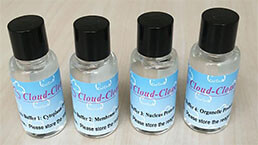 Lysis Buffer Specific for ELISA / CLIA
Lysis Buffer Specific for ELISA / CLIA
-
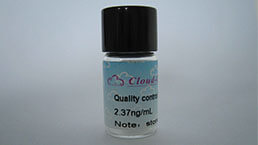 Quality Control of Kit
Quality Control of Kit
-
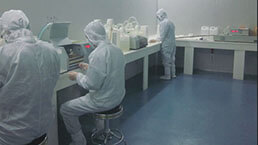 CLIA Kit Customized Service
CLIA Kit Customized Service
-
 Disease Model Customized Service
Disease Model Customized Service
-
 Serums Customized Service
Serums Customized Service
-
 TGFB1 Activation Reagent
TGFB1 Activation Reagent
-
 Real Time PCR Experimental Service
Real Time PCR Experimental Service
-
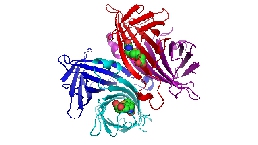 Streptavidin
Streptavidin
-
 Fast blue Protein Stain solution
Fast blue Protein Stain solution
-
 Single-component Reagents of FLIA Kit
Single-component Reagents of FLIA Kit
-
 Streptavidin-Agarose Beads
Streptavidin-Agarose Beads
| Magazine | Citations |
| Journalof Vascular Research | Effect of Hirulog-Like Peptide on Balloon Catheter Injury-Induced Neointimal Formation in Femoral Arteries of Minipigs and Relationship with Inflammatory Mediators Karger: 000257340 |
| Basic Research in Cardiology | Secretome of apoptotic peripheral blood cells (APOSEC) attenuates microvascular obstruction in a porcine closed chest reperfused acute myocardial infarction model: role of platelet aggregation and vasodilation PubMed: 22899170 |
| BioMed research international | Endothelial gene expression and molecular changes in response to radiosurgery in in vitro and in vivo models of cerebral arteriovenous malformations Pubmed: 24199192 |
| Free Radical Biology and Medicine | Involvement of nitric oxide with activation of Toll-like receptor 4 signaling in mice with dextran sodium sulfate-induced colitis Pubmed:24992835 |
| Materials Science and Engineering: C | MRI-compatible Nb–60Ta–2Zr alloy used for vascular stents: Haemocompatibility and its correlation with protein adsorption Pubmed:25063132 |
| Blood Coagul Fibrinolysis.? | Chemical sympathectomy attenuates inflammation, glycocalyx shedding and coagulation disorders in rats with acute traumatic coagulopathy. Pubmed:25325345 |
| Inflammation.? | Systemic and Flap Inflammatory Response Associates with Thrombosis in Flap Venous Crisis Pubmed:25448261 |
| Endocrine | Effects of glucagon-like peptide-1 on advanced glycation endproduct-induced aortic endothelial dysfunction in streptozotocin-induced diabetic rats: possible roles of Rho kinase- and AMP kinase-mediated nuclear factor κB signaling pathways Pubmed:26758998 |
| Microbial Pathogenesis | Protective effects of sinomenine against LPS-induced inflammation in piglets. pubmed:28757275 |
| Nutrition & Metabolism | L-Carnitine Supplementation Increases Trimethylamine-N-Oxide but not Markers of Atherosclerosis in Healthy Aged Women Pubmed: 30485835 |
| Available at SSRN 3335365 | Evaluating the Platelet Activation Related to the Degradation of Biomaterials by Scheme of Molecular Markers |
| Ecotoxicology and Environmental Safety | Molecular mechanisms of lead-induced changes of selenium status in mice livers through interacting with selenoprotein P |
| Thrombosis Research | Feasibility study of use of rabbit blood to evaluate platelet activation by medical devices Pubmed: 31838449 |
| JOURNAL OF CONTROLLED RELEASE | Polycaprolactone vascular graft with epigallocatechin gallate embedded sandwiched layer-by-layer functionalization for enhanced antithrombogenicity and anti … Pubmed: 31982435 |
| OXIDATIVE MEDICINE AND CELLULAR LONGEVITY | The Inhibition of P-Selectin Reduced Severe Acute Lung Injury in Immunocompromised Mice Pubmed: 32377309 |
| blood advances | The binding of autotaxin to integrins mediates hyperhomocysteinemia-potentiated platelet activation and thrombosis 34559203 |
| Vaccine | The effect of ChAdOx1 nCov-19 vaccine on arterial thrombosis development and platelet aggregation in female rats Pubmed:35183388 |
| Int J Biol Macromol | The inhibition of TRIM35-mediated TIGAR ubiquitination enhances mitochondrial fusion and alleviates renal ischemia-reperfusion injury Pubmed:35421414 |
| Experimental and Therapeutic Medicine | Construction of a rabbit model with vinorelbine administration via peripherally inserted central catheter and dynamic monitoring of changes in phlebitis and thrombosis Pubmed:35126715 |
| Catalog No. | Related products for research use of Mus musculus (Mouse) Organism species | Applications (RESEARCH USE ONLY!) |
| RPA569Mu02 | Recombinant P-Selectin (SELP) | Positive Control; Immunogen; SDS-PAGE; WB. |
| RPA569Mu01 | Recombinant P-Selectin (SELP) | Positive Control; Immunogen; SDS-PAGE; WB. |
| PAA569Mu02 | Polyclonal Antibody to P-Selectin (SELP) | WB; IHC; ICC; IP. |
| PAA569Mu01 | Polyclonal Antibody to P-Selectin (SELP) | WB; IHC; ICC; IP. |
| LAA569Mu71 | Biotin-Linked Polyclonal Antibody to P-Selectin (SELP) | WB; IHC; ICC. |
| LAA569Mu81 | FITC-Linked Polyclonal Antibody to P-Selectin (SELP) | WB; IHC; ICC; IF. |
| SEA569Mu | ELISA Kit for P-Selectin (SELP) | Enzyme-linked immunosorbent assay for Antigen Detection. |
| SCA569Mu | CLIA Kit for P-Selectin (SELP) | Chemiluminescent immunoassay for Antigen Detection. |
| LMA569Mu | Multiplex Assay Kit for P-Selectin (SELP) ,etc. by FLIA (Flow Luminescence Immunoassay) | FLIA Kit for Antigen Detection. |


